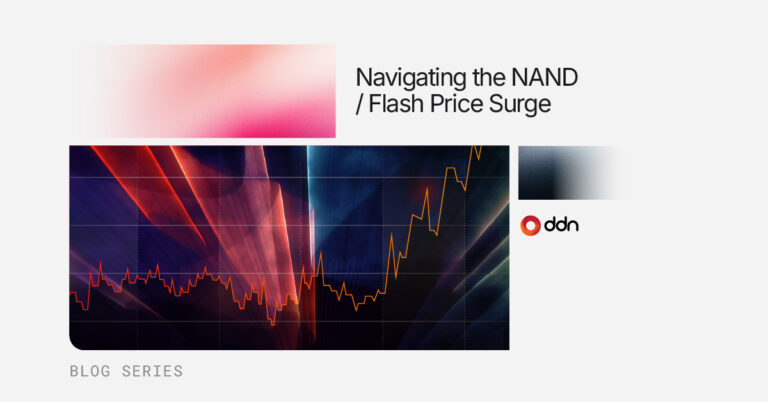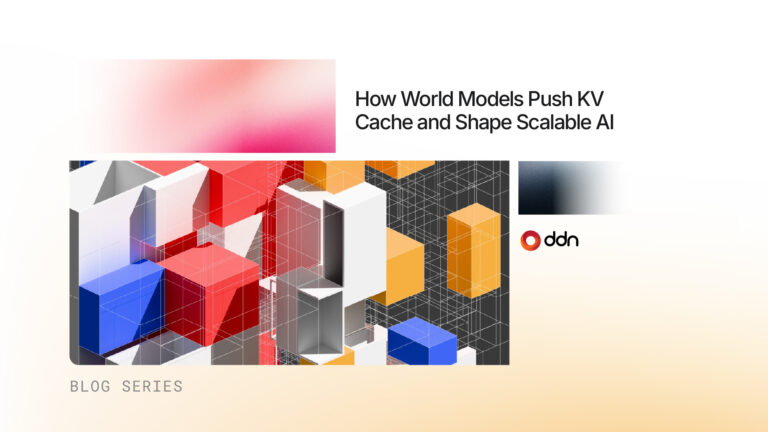In McKinsey’s recent report, the firm estimates that enterprises will pour over $7 trillion into scaling data centers by 2030 to support AI workloads. But the real winners won’t be those with the most silicon—they’ll be those with the smartest infrastructure. Compute is critical, but data intelligence is the true differentiator.
As organizations rush to adopt generative AI, they face a fundamental limitation: their legacy systems weren’t built for the demands of modern AI. From model training and inference to real-time analytics and hybrid cloud data movement, success now depends on intelligent, flexible, and high-performing infrastructure—particularly at the data layer.
AI Is Breaking Traditional Infrastructure
Legacy storage systems were designed for batch workloads and siloed operations. But today’s enterprise AI ecosystems require streaming pipelines, multimodal data support, and real-time responsiveness.
AI data isn’t created in a central repository, it’s born at the edge (in vehicles, labs, and smart factories), enriched with metadata, and moved to the core or cloud for processing. Each stage of the pipeline demands:
- Low-latency streaming for hybrid cloud fraud prevention
- Metadata-rich ingestion for retrieval-augmented generation (RAG)
- Scalable object storage for analytics and model inference
- Integrated compute pipelines that eliminate I/O bottlenecks
The more intelligent and efficient your data platform, the faster you can activate insights—and the better your AI will perform.
Real-Time Data Pipelines Are Becoming Table Stakes
According to MIT Technology Review, 72% of senior tech leaders rate real-time data streaming as “very important” to their future architecture. Why? Because the ability to act on data in real time is now a core business differentiator.
Consider these use cases:
- Fraud detection: AI models analyze transactions mid-stream across hybrid cloud environments.
- Genomics AI: Models process sequencing data in real time for faster drug discovery.
- Factory automation: Inference engines detect anomalies and trigger interventions immediately.
- Customer experience: LLMs deliver personalized responses within milliseconds of query input.
All of these workflows depend on real-time AI pipelines with scalable, metadata-aware infrastructure that spans multiple environments.
Enter the AI Data Intelligence Platform
To meet the demands of this AI-driven era, a new class of infrastructure has emerged: the AI Data Intelligence Platform. Unlike traditional storage, these platforms unify data across edge, core, and cloud—enabling real-time AI pipelines, minimizing data movement, and accelerating time to insight.
A modern AI data intelligence platform must offer:
- Multimodal support for structured, semi-structured, and unstructured data (e.g., text, video, logs)
- High-throughput object storage with sub-millisecond latency
- Container-native microservices that plug into your AI toolchain
- GPU-optimized I/O for model prep and inference
- Metadata-driven data governance for traceability and compliance
This is especially critical in industries like financial services, healthcare, and automotive, where data volumes are massive, latency is unacceptable, and trust in outputs is paramount.
Rethinking the Infrastructure Stack
AI is pushing enterprises to reconsider not just their compute investments, but how their entire stack operates. The reality is: AI workloads are only as effective as the infrastructure feeding them.
Organizations investing in large language models, RAG, and generative AI should consider:
- AI infrastructure that ensures high GPU utilization
- Unified data intelligence platforms that reduce data silos and latency
- Cloud-native object storage that supports massive throughput and fast search
- Inference-ready pipelines that integrate with frameworks like NeMo, ONNX, and Trino
The performance gap between traditional infrastructure and modern AI workloads is growing. Without purpose-built data intelligence layers, organizations risk falling behind—not for lack of compute, but for lack of insight.
Looking to unlock the full value of your AI initiatives?
Explore how the DDN Data Intelligence Platform is helping the world’s leading organizations go from artificial to actual.
FAQ
What is an AI Data Intelligence Platform?
A unified architecture that supports data movement, indexing, analytics, and inference across hybrid environments using real-time metadata intelligence.
Why is metadata so critical in AI workflows?
Metadata enables traceability, tagging, search, and orchestration, all essential for model governance and inference accuracy.
How does real-time analytics improve fraud detection?
It enables organizations to identify anomalies as they occur, using AI models that process event streams instead of batch data.
What’s the difference between traditional and AI-optimized data storage?
AI-optimized storage supports high concurrency, low latency, and multi-modal data handling—critical for training and inference at scale.



